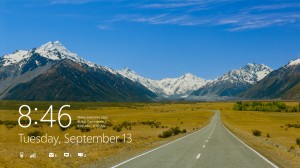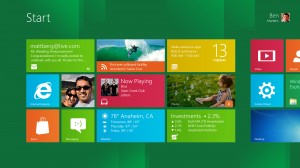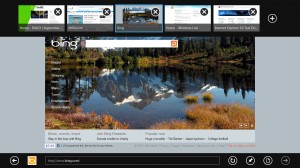
As technology companies continue driving towards the “next big thing”, they have a strange tendency to lose their way.
For Apple, that moment was just prior to Steve Jobs’s return to the helm, when it was producing more products than it could conceivably keep a handle on while trying to be too many things to too many customers.
And, on Tuesday evening (SA time), as Microsoft’s president for the Windows and Windows Live division, Steven Sinofsky, unveils Windows 8 — the software maker’s “next big thing” — he will be hoping like heck the moment Microsoft lost the plot is firmly in the past, namely its 2007 release of Windows Vista.
From what TechCentral has been shown of Windows 8 at Microsoft’s Build developer conference in California, the software is a big departure from Vista and even from Vista’s more stable successor, Windows 7.
It’s designed from the ground up to support multiple form factors — slates or tablets, notebooks, desktops and servers — and multiple architectures, including the traditional Intel x86 and now Arm chips that power tablets and other mobile devices. Microsoft is betting the farm on Windows 8 being the product that can unseat Apple from its perch in tablet computing.
In sessions that were fraught with “demo blues”, Microsoft engineers on Monday showed off everything from how the new operating system boots at rapid speed from cold to how it deals with a new style of applications and content sharing between apps.
TechCentral contributor Brett Haggard rounds up the biggest news from the event.

Quite a departure
First of all, Windows 8 is very smartphone-like. On boot, users are presented with a lock screen, similar to what they’d expect on a phone or tablet, displaying some of their most relevant information.
The new login screen includes things such as what’s coming up next in the user’s diary, their unread e-mails and the status of their computer’s battery.
Though users have the option of logging in with a password as they always have, Microsoft has created a new method called “picture password”, which involves the user making a gesture or two over a familiar picture.
After logging in successfully, they’re presented with the start screen, which — and there’s no way of getting around this — heavily resembles the start screen on Windows Phone 7, Microsoft’s smartphone software.
A couple of things are vastly different from previous versions of Windows, like the departure of traditional icon sets that user interfaces have had for decades. There’s also the emergence of touch as a universal mechanism for navigation.
Jensen Harris, director of programme management for the Windows user experience team, says Microsoft has replaced icons with tiles because they are more “expressive”. For example, they can give users a preview of the content housed within an application.
Harris says tiles can be resized, dragged and grouped on different parts of the start screen, which stretches out to the right almost like a movie reel.
Users either gesture to pan across the start screen, or pinch to zoom out (something Microsoft calls “semantic zoom”) to get a “stepped back” view of the whole start screen.
Metro-style apps
The look and feel of the start screen carries through to the apps themselves, which again strongly resemble the slick, content-rich apps on Windows Phone 7, except with more real estate.

Microsoft calls this new style of application “Metro Style” and we can expect these apps to be content rich, fill the entire screen or be “snapped” to a variety of form factors. As a result, more than one application can be viewed or used at a time.
Metro-style apps have also been designed around content and, as such, can share information with other programs easily or be searched for content that can in turn be sent to a contact. Microsoft enables this through a mechanism called “contracts”.
Contracts have been described as the “clipboard of the future” and in the same way the clipboard helped apps move data around the operating system, so contracts allow content to be moved around Windows 8, but with added context.
So, instead of an application being developed in such a way that it’s aware of the apps it’s compatible with, developers can make use of the “sharing” contract, for example, to pull information from another app that similarly supports the sharing contract to make its information available.
Lucky charms
Contracts are invoked by a sweeping right-to-left gesture from the edge of the touch screen and are represented by an interface or context menu Microsoft is calling “charms”. Charms consist of five icons, namely “start”, “share”, “search”, “devices” and “settings”.
Though “share” and “search” allow users to make use of contracts, “start” takes users back to the start screen and “devices” allows users to access shortcuts of sorts that relate to external peripherals, such as projectors or printers.
Microsoft has vastly expanded the hardware supported natively in Windows, but vendors are now encouraged to develop their own Metro-style apps for managing their devices. These will in turn be made accessible through the “devices” charm.
The “settings” charm, as its name suggests, covers the settings for each app but also provides users with a quick route back to system-wide settings.
The desktop’s not dead
But what of apps designed for the more traditional Windows interface? The answer is that Microsoft has exposed the desktop interface in such a way that it will run more traditional apps as they were intended in an interface that is for all intents and purposes Windows 7.
The desktop, Microsoft says, is exposed as an app on its own as opposed a different graphical environment. Because it looks so vastly different to the start screen and Metro-style apps, however, it still feels like there are two distinct operating systems running on Windows 8 and this is a little strange.
Into the cloud
Something that will probably be drowned out by all of the noise surrounding the unveiling of Windows 8 is just how good a job Microsoft has done in offering cloud computing — online services — as a cornerstone of the software.

Chris Jones, Microsoft’s corporate vice-president of Windows Live, says all a user’s data can be synchronised across multiple devices through Skydrive, its consumer-focused cloud storage solution.
The same holds true for the personalised aspects of the operating system: the user’s choice of desktop wallpapers, images shown on the lock screen and security credentials.
What’s particularly powerful is the Skydrive-powered photo reel Microsoft will include with Windows 8. When a user takes a photo on their tablet, smartphone or any other Live-enabled device, the photo reel will automatically sync with the cloud.
This means a user can snap a photo using their phone and within seconds be editing that same photo on their notebook or desktop without having performed any manual transfer of the picture from the one device to the other.
Though Jones says data can easily be synchronised with Skydrive, there’s often data lying around on a home PC that might not be important enough for storage and backup on Skydrive. Again, this is where Live comes to the rescue. By simply having the same Live ID present on two machines, users will be able to access data on a remote PC’s hard disk, all via the cloud.
Windows Store
It was expected, but Microsoft has now confirmed it will be launching an online app store, modelled heavily on the store it uses to sell Windows Phone apps — only on a much, much bigger scale.
Though a developer will be able to publish an app and have it available in the store within a day, Microsoft isn’t saying yet if the store will be available in all markets at the time of Windows 8’s launch.
Sinfosky tells TechCentral he can’t say when the store will be launched in SA and the company is saying nothing more about it for now.
Iain McDonald, GM for the Windows Server Group, says Microsoft is concentrating first on finishing Windows 8. It will decide later which countries and regions have the “infrastructure and, more importantly, the scale of infrastructure” as well as the customer demand to make it feasible to offer the service.
Our reading is that an SA version of the store will be available when Windows 8 launches, but that remains speculation for now. — Brett Haggard, TechCentral
- Subscribe to our free daily newsletter
- Follow us on Twitter or on Facebook




